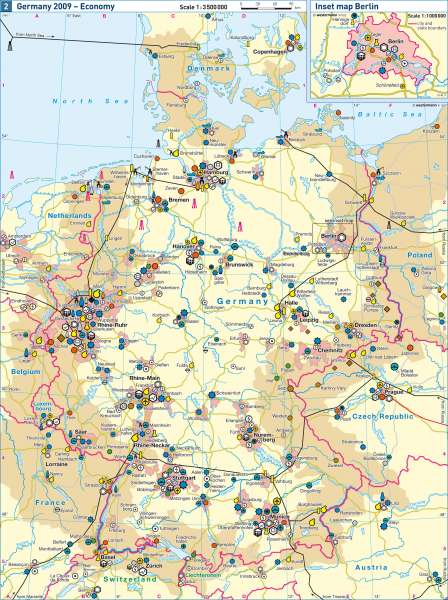Germany 2009 — Economy
Germany - Economic transition
978-3-14-100790-9 | Page 73 | Ill. 2

Information
Until 1990, the world had been divided into two power blocs after World War II. On one side, which included the USA, were countries where a social market economy was practiced. Militarily the most important of these states were organised in NATO. On the other side were the Soviet Union-dominated states, with a planned socialist economy which was represented militarily by the Warsaw Pact. The interface of these two fundamentally different systems existed in a divided Germany. West Germany was allied with the Federal Republic of Germany (FRG) and East Germany with the Democratic Republic (GDR). The policy guidelines also had a significant influence on the economy in both countries.Germany's economy in 1979
The German division had broken the traditional economic structures. Due to nationalisation, many businesses had to abandon their headquarters in the east and seek a new location in the west. A special case was the western part of Berlin, which had been divided as part of the FRG although surrounded by the territory of the GDR. Therefore, Berlin was isolated. As a result, Siemens, for example, had to leave its Berlin office and relocate to Munich. The company's move also contributed during the following decades to modern industries locating to Bavaria. Hamburg also had to re-adjust itself as the major port location and became suddenly deprived of its eastern hinterland.
The Ruhr area is traditionally amongst the most important business locations in Germany. Certainly before the crisis of 1979, it had already established a thriving mining industr




